When planning your Japan itinerary, Hakone often comes up as a must-visit destination – and for good reason. But with so much to see, and so many lovely onsen hotels, is it worth staying overnight in Hakone? This guide will help you decide whether to visit Hakone as a day trip from Tokyo or if it’s best to extend your stay overnight, with practical advice, timings and itineraries to make the most of your time.
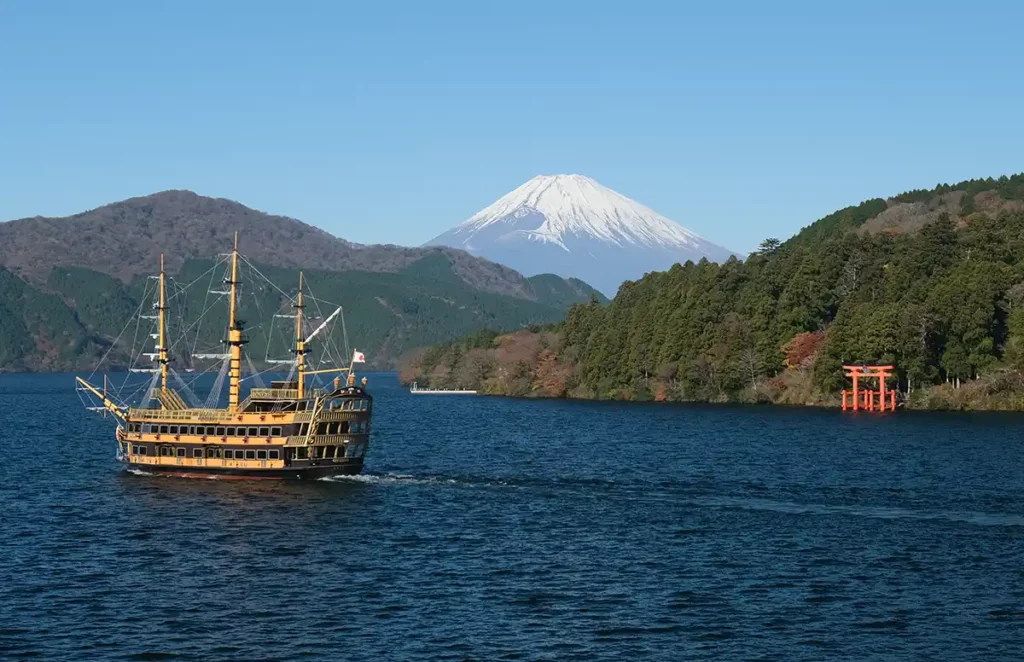
Why visit Hakone?
Located in Kanagawa Prefecture, Hakone offers a perfect escape from Tokyo. The area is famous for its hot springs (onsen), views of Mount Fuji, and unique experiences including a pirate ship that crosses Lake Ashi, a cable car across an active volcano and scenic mountain railways.
Things to do in Hakone
There are so many things to do in Hakone that it’s well worth considering an overnight stay. You can visit a range of art museums, see steam coming out of vents on an active volcano, go hiking, see lovely gardens and visit beautiful shrines.
Most of the attractions are connected by the Hakone Loop, and it’s easy to get around using a convenient transport pass.
The other big attraction of the area is the number of hot spring onsen baths, which are mostly fed by water heated by the Mount Hakone volcano.
It’s possible to do the Hakone Loop, and perhaps one or two attractions, as a day trip from Tokyo, but if you want to see more, and give yourself time to relax in an onsen, then you may want to consider staying overnight in Hakone.
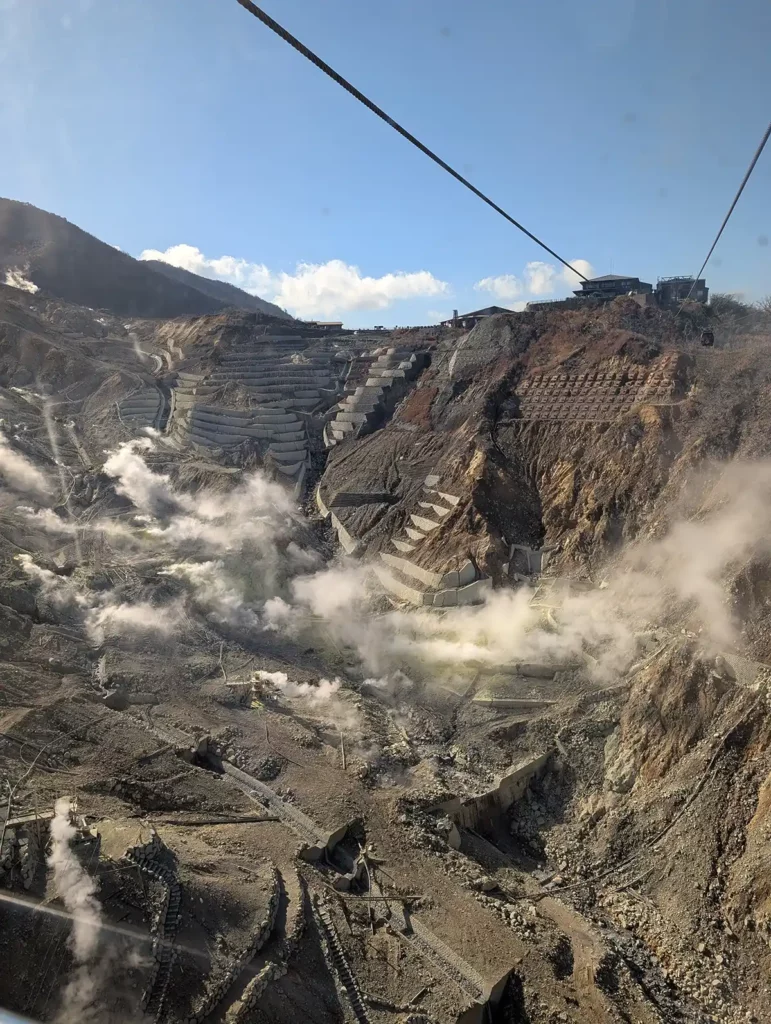
The Hakone Loop
Whether you visit Hakone as a day trip or stay overnight, most visitors will do the famous Hakone Round Course (often called the Hakone Loop), which connects the area’s main attractions using various forms of transport. The transport is part of the experience and includes:
- a mountain railway with switchbacks
- a cable car through the mountains
- a ropeway with views of Mount Fuji
- a pirate ship across Lake Ashi
- buses connecting everything together
A Hakone Freepass covers all these transport options and costs between 5,000 yen and 6,500 yen, depending on whether you want to buy a ticket for two or three days, and whether you want to include train travel from Tokyo. You can buy the Hakone Freepass pass at Shinjuku Station, Odawara Station or online.
Read my complete guide to the Hakone Loop, including how to get to and from Hakone from Tokyo
Art galleries
Hakone is an art-lover’s dream, and if you’re interested in sculpture or Japanese art, I’d definitely recommend that you stay a night or two in Hakone rather than heading straight back to Tokyo.
It’s worth checking out some of the galleries for their grounds and their architecture; the Narukawa Art Museum has lovely views across Lake Ashi, the Hakone Museum of Art has a beautiful garden, and the Pola Museum of Art is set in an innovative underground building.
The art galleries and museums in Hakone include:
- Hakone Open Air Museum
- Pola Museum of Art
- Narukawa Art Museum
- Hakone Museum of Art
- Hakone Museum of Photography
- Hakone Venetian Glass Museum and Glass Forest
- Lalique Museum
- Okada Museum of Art
- Homma Yoseki Museum
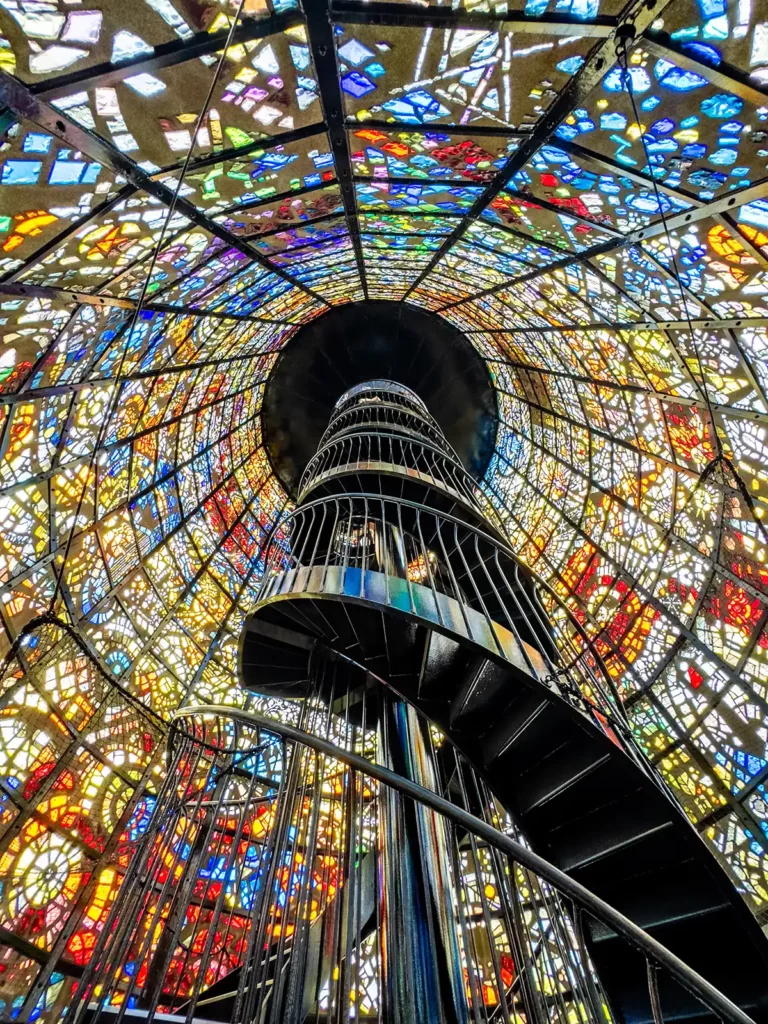
Other museums and attractions
Hakone is rich in history – both natural and man-made. The area was on the old Tōkaidō Road which linked Kyoto to Edo (modern-day Tokyo) during the Edo period and there was an important checkpoint on the edge of the lake, which has been reconstructed as a museum.
Elsewhere in Hakone, you can explore Hakone’s unique geology at the Geo Museum, see dinosaurs at the Museum of Natural History and find out more about one of Japan’s most famous long distance running races at the Ekiden Museum.
- Hakone Checkpoint and Museum
- Hakone Visitor Centre
- Hakone Geo Museum
- Hakone Gora Park
- Hakone Doll House Museum
- Hakone Ekiden Museum
- Kanagawa Prefectural Museum of Natural History
- Hakone Town History Museum
Shrines
The most popular shrine to visit in Hakone is Hakone-jinja shrine, which is set deep in the woods near Motohakone but has a stunning torii gate right on the edge of Lake Ashi. The torii is a popular Instagram spot – be prepared to queue if you want the perfect picture!
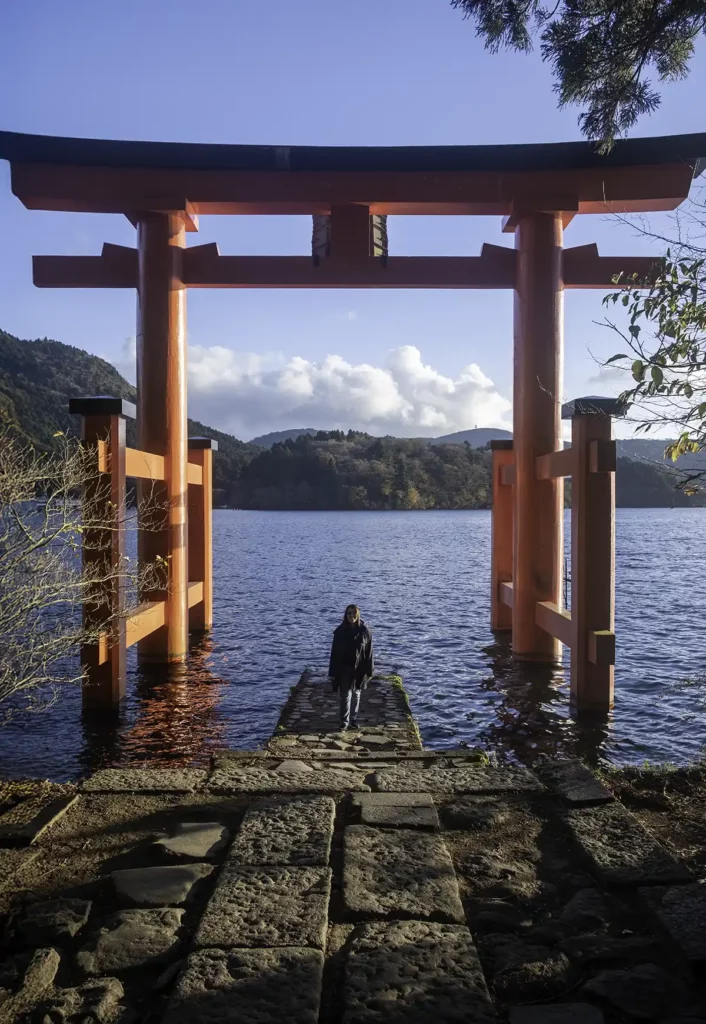
Another lovely shrine is Fukazawa Zeniarai Benzaiten Shrine, which is right next to Tonosawa Station on the Hakone Tozan railway. If you wash money in the spring waters here, it’ll come back to you doubled.
Onsen baths
Hakone is famous for its onsen – baths that are mostly fed by natural hot springs. Most onsen are in ryokan (traditional inns) or hotels, but there are some day onsen that are available for day trippers to use.
The Yunessun spa resort is the most famous (and most fun), with 23 hot spring baths, including baths containing wine, coffee and sake. If you’ve ever seen pictures of a bath with a giant wine bottle, that’s Yunessun! Other day onsen in Hakone include Hakone Yuryo, Kappa Tengoku and the onsen at Yumoto Fujiya Hotel.
Day trip from Tokyo itinerary: what’s possible?
You can experience Hakone’s highlights in a day trip from Tokyo, but it requires early starting and efficient planning. Leaving Tokyo before 8am gives you enough time to complete the Hakone Loop and visit either an onsen or 2-3 major attractions. I’ve put together a couple of day trip itineraries for a Hakone day trip below.
Getting to Hakone for a day trip
The first Romancecar train leaves Shinjuku Station at 07:37, arriving at Hakone-Yumoto station at 09:22. From there, you can either do the Hakone loop clockwise, starting with a bus to Motohakone and a lake cruise on the pirate ship, or anti-clockwise with the train to Gora and the Hakone Open Air Museum.
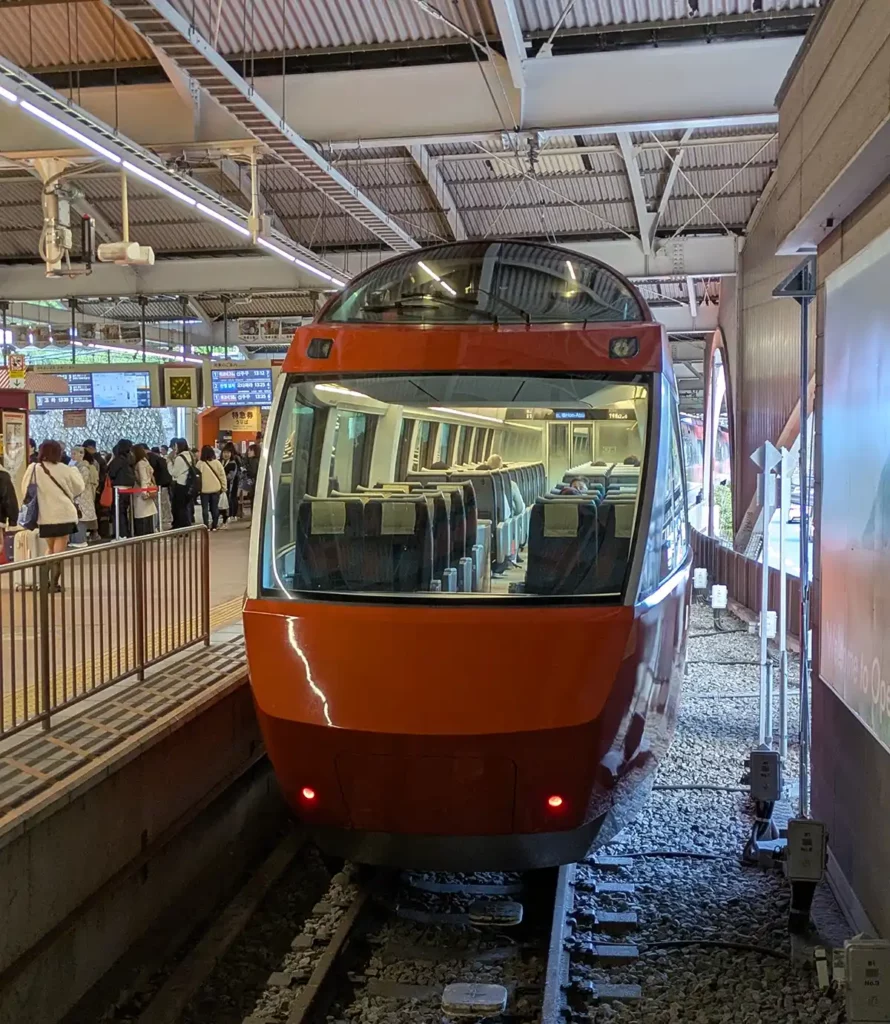
If you want to get to Hakone earlier, you could take the 06:20 Odakyu express train from Shinjuku to Odawara then change to the local service to Hakone-Yumoto, which would get you to Hakone-Yumoto at 08:19. The early start might be worth it if you’re hoping to visit multiple museums, but the pirate ship cruises only start at around 10am.
If you’re staying on the eastern side of Tokyo, you could take a quick Shinkansen ride to Odawara then change for the local service, which is around 45 minutes quicker than the other travel options but costs more. Alternatively, you could take the Tōkaidō Line to Odawara then on to Hakone-Yumoto on the local train.
Day trip itineraries
Here are some sample day trip itineraries for a day trip from Shinjuku to Hakone using the Romancecar limited express train and the transport options included in the Hakone Freepass. I’ve provided these to give you an idea of what you can fit into a trip to Hakone if you choose a day trip rather than staying overnight.
Itinerary 1: Hakone express
This itinerary is the minimum time you’d need to race around the Hakone sightseeing loop. I’ve chosen a clockwise itinerary as it’s often slightly quieter, meaning fewer queues, but be aware that this is a very optimistic schedule – there’s absolutely zero dawdling allowed with this one!
09:22 – arrive at Hakone-Yumoto station on the earliest Romancecar from Shinjuku
09:45 – take the K line bus towards Motohakone
10:24 – arrive at Motohakone port
10:45 – take a pirate ship cruise across Lake Ashi towards Togendai
11:10 – arrive at Togendai port, transfer to the ropeway towards Owakudani
11:30 – arrive at Owakudani, transfer to the other ropeway towards Sōunzan Station
11:40 – arrive at Sōunzan Station, transfer to the cable car towards Gora
11:58 – arrive in Gora, transfer to the Hakone Tozan train towards Hakone-Yumoto
12:45 – arrive back at Hakone-Yumoto station
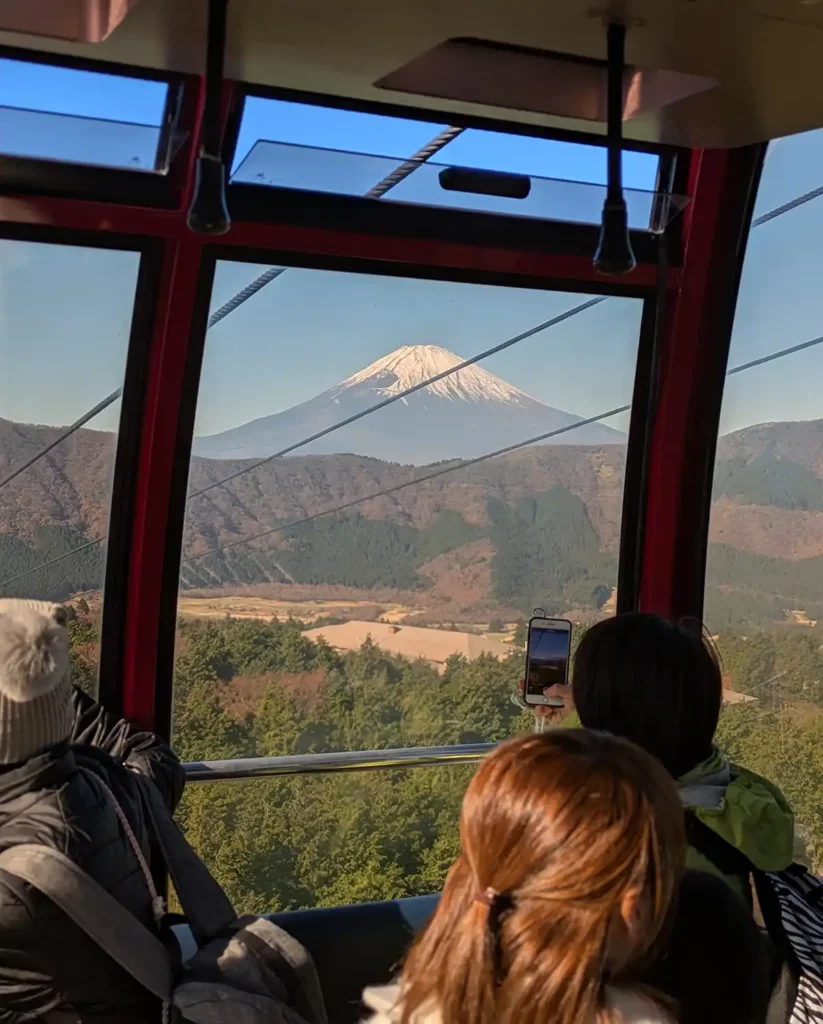
Itinerary 2: Hakone highlights
This more relaxed itinerary takes you clockwise with longer stops at Hakone shrine, Owakudani and a visit to the Hakone Open Air Museum.
09:22 – arrive at Hakone-Yumoto station on the earliest Romancecar from Shinjuku
09:45 – take the K line bus towards Motohakone
10:24 – arrive at Motohakone port, walk to Hakone shrine, queue for a photo at the torii gate and see the shrine
12:00 – get something to eat in Motohakone
12:45 – take a pirate ship cruise across Lake Ashi towards Togendai
13:10 – arrive at Togendai port, transfer to the ropeway towards Owakudani
13:30 – arrive at Owakudani and eat a black egg
14:00 – transfer to the ropeway towards Sōunzan Station, transfer to the cable car towards Gora
14:20 – arrive in Gora and walk 15 minutes or take the train to the Hakone Open Air Museum
17:10 – take the Hakone Tozan train from Chokokunomori station towards Hakone-Yumoto
17:42 – arrive back at Hakone-Yumoto station
17:46 – take the Romancecar back to Shinjuku
19:26 – arrive back in Shinjuku
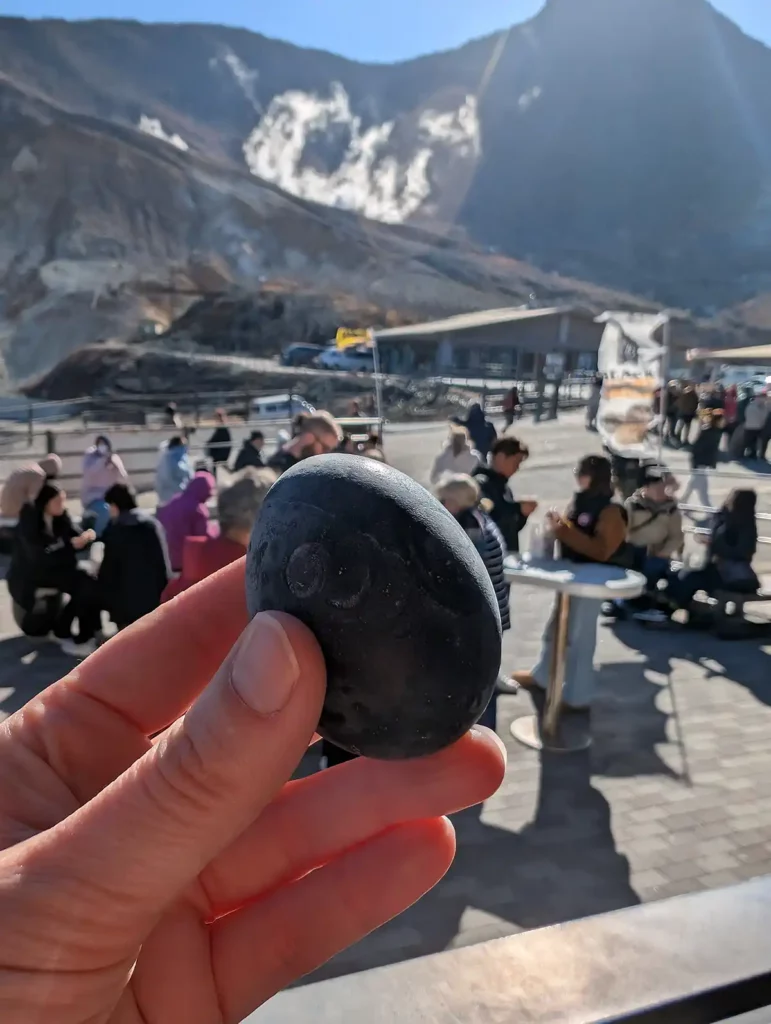
Why stay overnight in Hakone?
Staying overnight in Hakone transforms your experience from a rushed highlights tour to a deeper appreciation of the area. As you’ve seen, there are enough attractions in Hakone to fill several days, plus many attractions close by 5pm, and the evening offers unique experiences you’ll miss on a day trip.
The main advantage of staying overnight is having the chance to experience onsen (hot spring) culture. Most ryokan (traditional inns) around Hakone include private or shared onsen baths, best enjoyed in the evening or early morning. Many also serve kaiseki dinners – elaborate multi-course meals featuring local specialities.
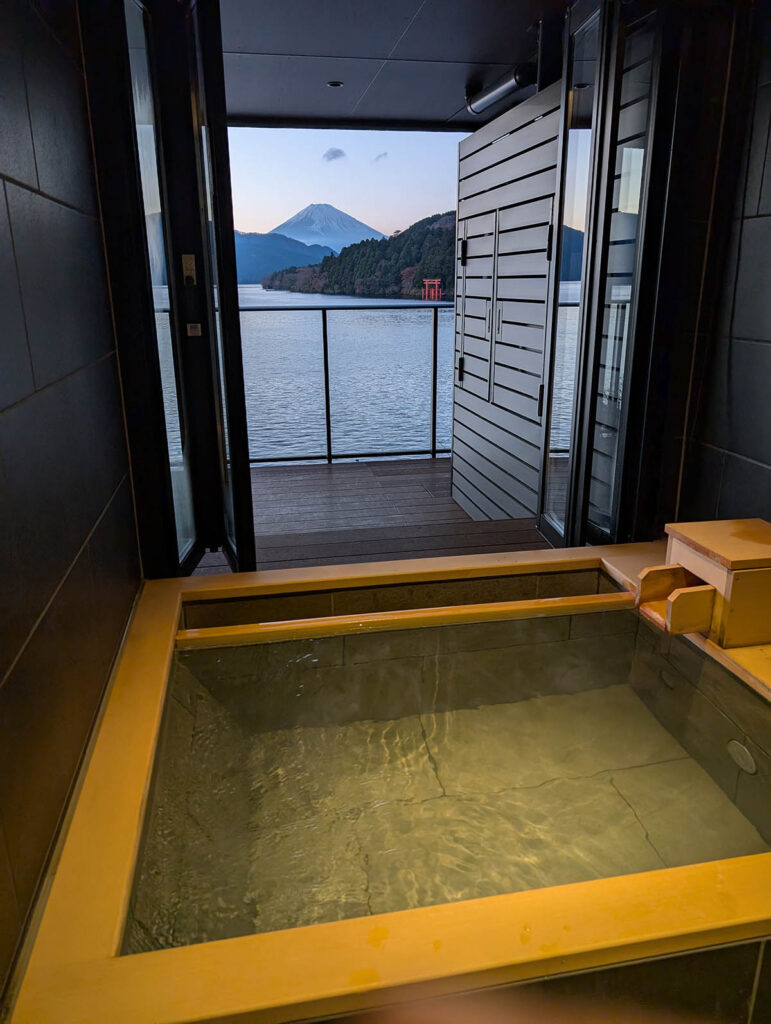
Mornings and evenings in Hakone tend to be less crowded, offering better photo opportunities and more peaceful exploration, although the ropeways and pirate ships don’t run at these times.
Finally, having two or three days in Hakone will give you more chances to see Mount Fuji. If seeing Fuji-san is a priority, then I recommend staying near Motohakone, where there are several hotels and ryokan with Mount Fuji views.
Best places to stay in Hakone
Mount Fuji views
Rakuten Stay Fujimi Terrace – read my full review
Rooms with private onsen
Traditional ryokans
Budget options
Day trip or overnight – making your choice
You’re bound to have a great time in Hakone, whether you visit for a single day or spend two or more days in the area.
Choose a day trip if:
- your time in Japan is limited
- you’re comfortable with an early start and busy schedule
- you mainly want to experience the Hakone Loop, and one or two more of the major sights
- you’re travelling on a tighter budget
Stay overnight if:
- you want to experience onsen culture
- you want to visit several of Hakone’s attractions
- you prefer a relaxed pace
- you’re interested in photography
- you want to increase your chances of seeing Mount Fuji
- you’d like to try traditional ryokan accommodation
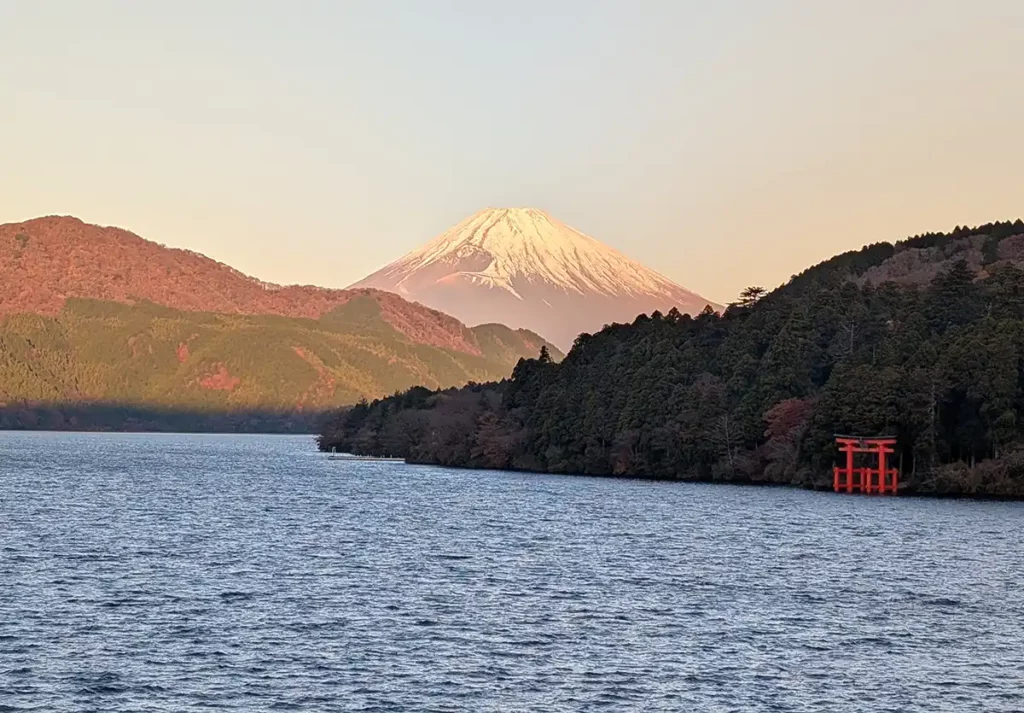
Practical tips
If you decide to stay overnight in Hakone, you should book accommodation at least three months in advance for peak seasons (cherry blossom and autumn leaves). Many ryokan include dinner and breakfast – factor this into your budget comparisons.
The Hakone Freepass becomes better value with an overnight stay, as you can use it for travel on both days. Consider buying it even for a day trip, as individual transport tickets can quickly exceed the pass price.
If you decide to do a day trip, check weather forecasts and try to visit on a clear day for better Mount Fuji views. Tuesdays, Wednesdays and Thursdays are usually the quietest days for visiting Hakone.
Many attractions accept credit cards, but carry cash for smaller purchases and some traditional ryokan. Most convenience stores have ATMs accepting international cards.
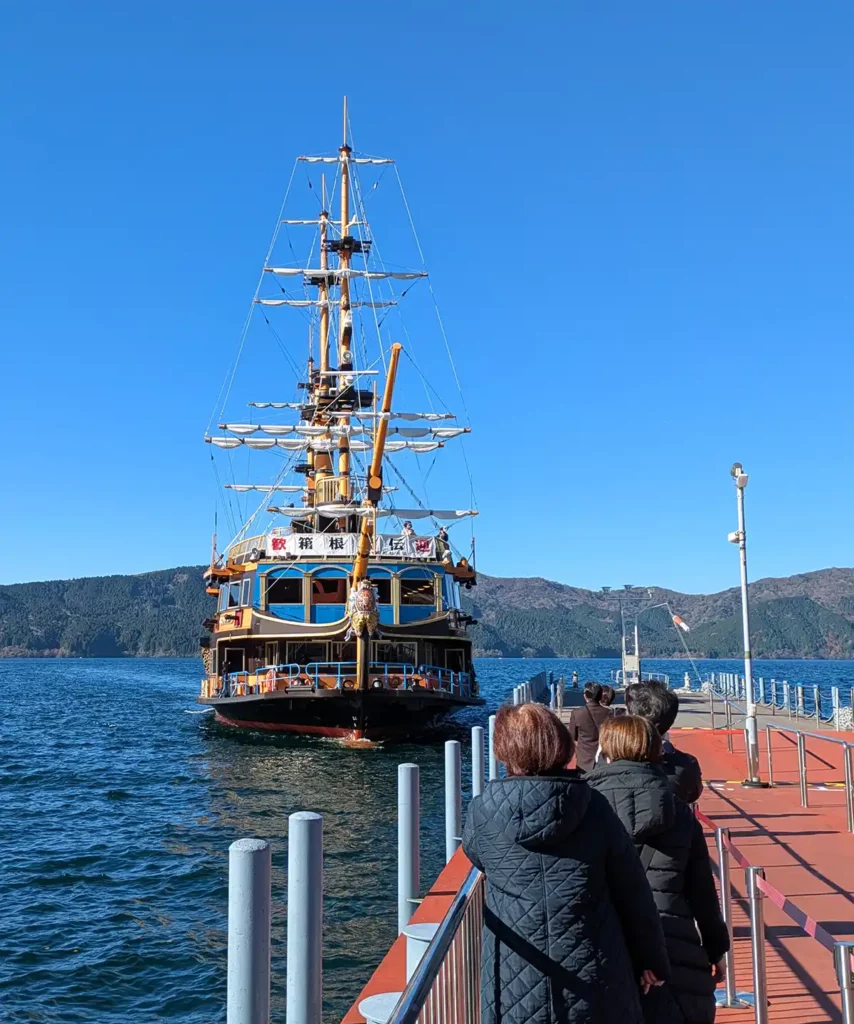
Final thoughts
While a day trip to Hakone from Tokyo can work well with careful planning, staying overnight offers a richer experience and better value for your time and money. If you can spare the time and budget, an overnight stay allows you to experience more of what makes Hakone special, from early morning views to evening onsen relaxation.
Whatever you choose, don’t miss visiting Hakone. A trip around the Hakone sightseeing loop is so much fun, and there are tons of attractions to enjoy if you can spend a little longer in Hakone. Whether you choose a day trip or an overnight stay, Hakone is a beautiful and fascinating area, and the perfect contrast with Tokyo.
Would you take a day trip to Hakone or stay overnight?

